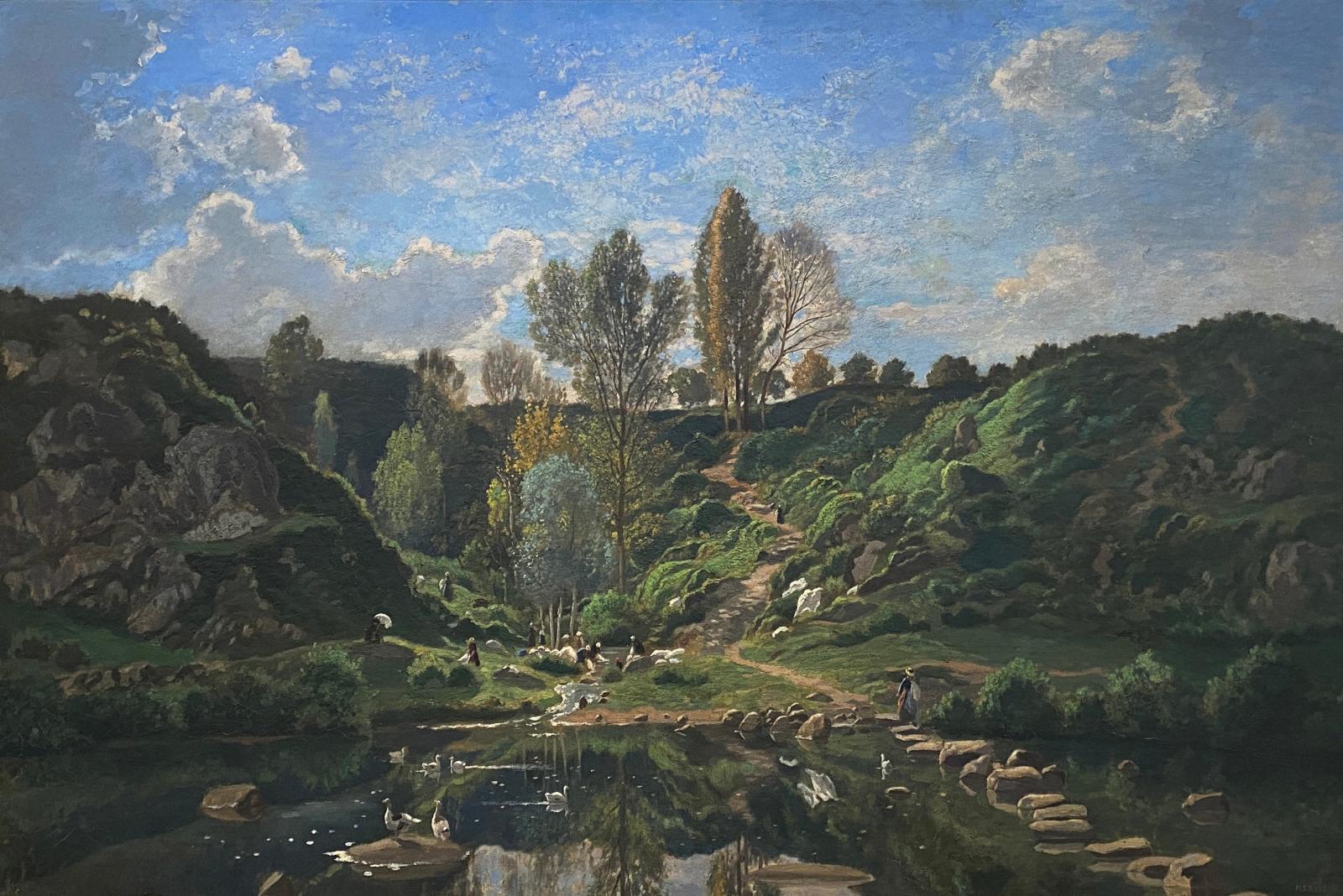Description
The Barbizon school rejected the Academic tradition and theory in hopes of making a more accurate representation of the countryside. They were devoted to depicting the working class in their paintings, showing the lives of farmers, gravediggers, woodsmen, poachers, and other workers. In Barbizon Landscape, Hérisson places washer women at the edge of a pond. Typical for Barbizon painting, these women represent the peasant class and present a lifestyle that was foreign to many viewers of art, particularly the upper class. Barbizon paintings glorified the hard work and lives of these subjects. Hérisson glorifies the daily routine of the washer women by placing them in the most beautiful of landscapes. Everything from the sky color, rolling hills, and steppingstones idealizes the work conditions of peasants. In fact, many paintings that glorified the lives of the working class served as propaganda that hid the cruel facts of peasant life from the upper class. Some artists chose the subject for social and political reasons, while other simply admired the beauty of their subject. Barbizon Landscape is a beautifully composed period painting from French history. It presents the ideas of the Barbizon school and displays Hérisson’s talent as an artist.
provenance
Privater Collection, Newtown, CT





















